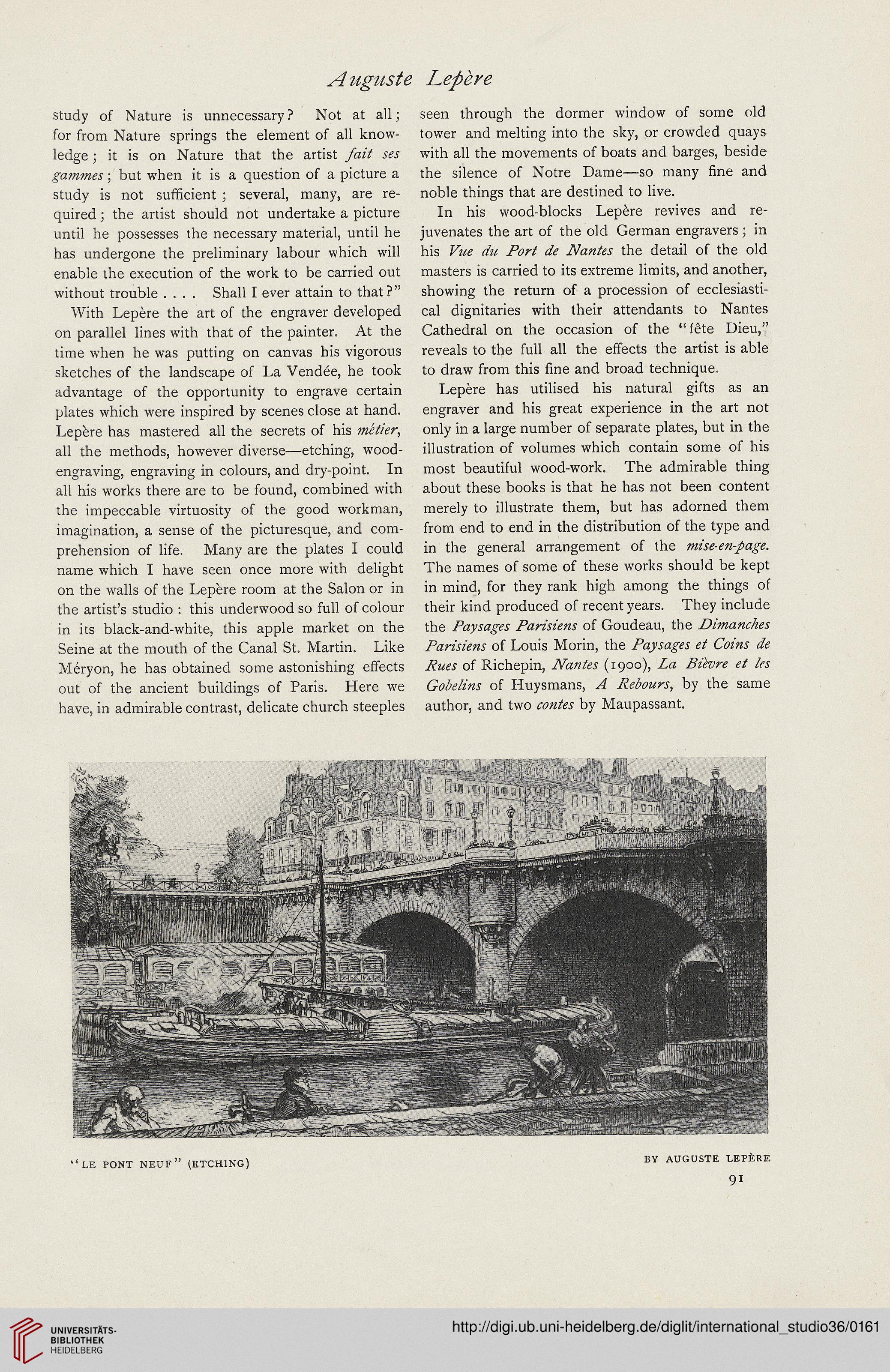study of Nature is unnecessa.ry? Not at all;
for from Nature springs the eiement of ali know-
iedge; it is on Nature that the artist yaz? TM
; but when it is a question of a picture a
study is not sufhcient ; severai, many, are re-
quired; the artist shouid not undertake a picture
untii he possesses the necessary materiai, until he
has undergone the preiiminary iabour which wiii
enabie the execution of the work to be carried out
without troubie .... Shaii I ever attain to that?"
With Lepere the art of the engraver deveioped
on paraliel iines with that of the painter. At the
time when he was putting on canvas his vigorous
sketches of the iandscape of La Vend^e, he took
advantage of the opportunity to engrave certain
plates which were inspired by scenes close at hand.
Lepere has mastered all the secrets of his 772;We?-,
all the methods, however diverse—etching, wood-
engraving, engraving in colours, and dry-point. In
all his works there are to be found, combined with
the impeccable virtuosity of the good workman,
imagination, a sense of the picturesque, and com-
prehension of life. Many are the plates I could
name which I have seen once more with delight
on the walls of the Lepere room at the Salon or in
the artist's studio : this underwood so full of colour
in its black-and-white, this apple market on the
Seine at the mouth of the Canal St. Martin. Like
Meryon, he has obtained some astonishing effects
out of the ancient buildings of Paris. Here we
have, in admirable contrast, delicate church steeples
seen through the dormer window of some old
tower and melting into the sky, or crowded quays
with all the movements of boats and barges, beside
the silence of Notre Dame—so many fine and
noble things that are destined to live.
In his wood-blocks Lepere revives and re-
juvenates the art of the old German engravers; in
his Fz«7 7%/ .Mz7?/M the detail of the old
masters is carried to its extreme limits, and another,
showing the return of a procession of ecclesiasti-
cal dignitaries with their attendants to Nantes
Cathedral on the occasion of the "lete Dieu,"
reveals to the full all the effects the artist is able
to draw from this 6ne and broad technique.
Lepere has utilised his natural gifts as an
engraver and his great experience in the art not
only in a large number of separate plates, but in the
illustration of volumes which contain some of his
most beautiful wood-work. The admirable thing
about these books is that he has not been content
merely to illustrate them, but has adorned them
from end to end in the distribution of the type and
in the general arrangement of the Tzzz'^-z'Tz^a^i?.
The names of some of these works should be kept
in mind, for they rank high among the things of
their kind produced of recent years. They include
the Ay.MyM' AzT-AATM of Goudeau, the Zh'7%<x7z<r/%M
V<?7-f.H'<w of Louis Morin, the g? Cbz'7z.r <fc
of Richepin, Mzzz/M (1900), Za /rj
of Huysmans, yf Z'c^<7M7-y, by the same
author, and two rwz/M by Maupassant.
"LE FONT NEUF" (ETCmNG)
BY AUGUSTE LEP&RE
91




